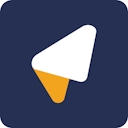5 tips on what to do after releasing an MVP
Published on Mar 20, 2024
Introduction
Building an MVP is a good first step in getting that dream product that you always want. But now that your MVP is released, what is the next step?
This is a good time to consider how to move on from an MVP, such as going full-scale when you feel like your MVP has been successful enough. Here are some quick tips on how to convert your MVP into a complete product worthy of your company’s reputation.
1. Consider whether your MVP is viable enough to continue
Before scaling, consider whether your MVP has enough potential to make it a worthwhile investment. Data that you have gathered from the process can be used as an important metric in determining your next move. For example, you can ask yourself these questions:
- Who are my customers, have I gathered their feedback?
- What do I need to improve from this MVP?
- Can I profit from this idea?
Knowing the answers to these questions will certainly help you make a more informed decision for your product’s future.
2. Create a strong team of developers
Creating a high-quality product requires talented minds, so look for experienced software developers with the expertise that you think is suitable to what you are envisioning.
If your local area is limited in human resources, think outside the box and go with outsourcing as a logical alternative.

Fostering a strong sense of collaboration and innovation between team members will have you go a long way in ensuring a truly quality and creative full-scale product.
3. Refine your features
Using user feedback from your MVP phase, the full-scale product will consist of expansion and refinement on the many aspects, and features that you have touched upon during the MVP phase.
Remember to prioritize the development of features that provide the most value to users and align with your product's core objectives, with incremental feature updates, you can maintain user engagement while still offering continuous value.
4. Scale your operations
Scalability is often a problem that many startups fail to consider. This means that startups need to be prepared for cases such as the product becoming a sudden viral hit, which could have a tremendous impact on a product's success if the team you have is not prepared for that.
As such, it is recommended to consider tasks such as automation for processes, create a strong network with your vendors, and leverage any advantages you have to expedite your product development and maintenance.
5. Consider a scalable marketing strategy
Develop a scalable marketing strategy to promote your full-scale product. Utilize a mix of digital marketing, content creation, and social media to reach a broader audience.

You can leverage the positive feedback and success stories from your MVP phase as a good foundation to build more credibility.
Conclusion
Transitioning from an MVP to a full-scale product is a critical juncture in product development. By using the above tips that we have provided, your final product will have a better chance of becoming successful on the market.
Despite that, scaling from an MVP is not an easy task, so contact us here and let us help you optimize your strategy to the best of our ability.











